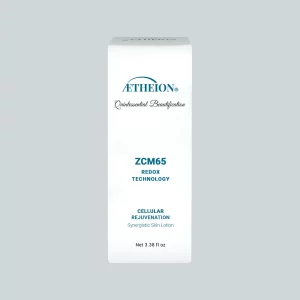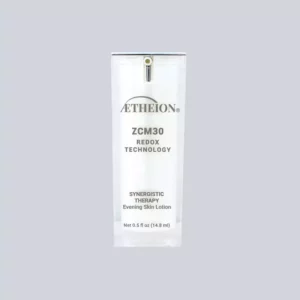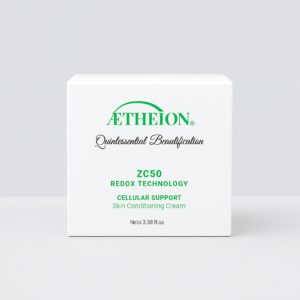Skin Rash Types: How to Identify and Treat the 7 Most Common Kinds
Table of Contents
Skin rashes are among the most common dermatological concerns, affecting individuals of all ages and skin types. From mild irritation to chronic conditions, rashes can manifest in various forms—red, itchy, scaly, or inflamed. While some rashes resolve on their own, others require targeted treatments and long-term management. Understanding the different skin rash types is essential to identifying triggers, applying appropriate remedies, and preventing recurrence.
In this comprehensive guide, we'll explore the seven most common types of skin rashes, their symptoms, causes, and effective treatments. We'll also discuss how AETHEION® products, with their advanced formulations, can help soothe, protect, and rejuvenate irritated skin.
Why Understanding Skin Rash Types Matters

Not all rashes are created equal. While some may stem from external irritants, others could indicate an underlying health condition. Correctly identifying the rash type allows for effective treatment and prevents further complications.
Key Benefits of Understanding Rash Types:
- Avoid unnecessary treatments that might worsen symptoms.
- Spotting when a rash is a symptom of a more serious condition.
- Preventing flare-ups through lifestyle and product adjustments.
1. Eczema (Atopic Dermatitis)

Eczema is a chronic skin condition characterized by red, itchy, and inflamed patches. It frequently affects children but can persist into adulthood. Eczema can cause significant discomfort, and it is commonly found on the hands, feet, face, and behind the knees.
Symptoms:
- Red, dry, and scaly patches.
- Severe itching, which may worsen at night.
- Cracks or blisters in more severe cases.
Common Triggers:
- Allergens such as pet dander and pollen.
- Harsh soaps, detergents, and synthetic fabrics.
- Weather changes, particularly during cold, dry seasons.
Treatment Options:
- Fragrance-free moisturizers to maintain hydration.
- Topical corticosteroids to reduce inflammation.
- Antihistamines to control itching.
2. Psoriasis

Psoriasis is an autoimmune condition characterized by an overproduction of skin cells, leading to red, scaly patches. It commonly appears on the scalp, elbows, and knees and is often accompanied by itching or burning sensations.
Symptoms:
- Thick, raised patches of red skin with silvery scales.
- Itching, cracking, or bleeding in affected areas.
- Flare-ups triggered by stress or injury.
Common Triggers:
- Stress and infections.
- Skin injuries like cuts or scrapes.
- Certain medications, such as beta-blockers.
Treatment Options:
- Topical treatments, including salicylic acid or vitamin D analogs.
- Light therapy for severe cases.
- Lifestyle adjustments to manage stress and reduce triggers.
3. Hives (Urticaria)

Hives are raised, red, itchy welts that develop suddenly and can spread across the body. They typically result from an allergic reaction lasting from hours to days.
Symptoms:
- Red or skin-colored welts that vary in size.
- Intense itching.
- Swelling that may come and go.
Common Triggers:
- Foods like shellfish, peanuts, or dairy.
- Medications, including antibiotics or aspirin.
- Insect bites or stress.
Treatment Options:
- Antihistamines to reduce itching and swelling.
- Cool compresses to soothe irritation.
- Avoidance of known allergens.
4. Contact Dermatitis
Contact dermatitis occurs when your skin comes into direct contact with an irritant or allergen, causing redness, itching, and sometimes blisters.
Symptoms:
- Red, inflamed patches that may blister.
- Intense itching or burning sensations.
- Dry or cracked skin in chronic cases.
Common Triggers:
- Harsh chemicals in cleaning products or soaps.
- Jewelry containing nickel or other metals.
- Fragranced skincare products.
Treatment Options:
- Rinse the affected area with cool water to remove irritants.
- Apply topical corticosteroids for severe inflammation.
- Use barrier creams to protect the skin.
5. Rosacea
Rosacea is a chronic skin condition that primarily affects the face, causing redness, visible blood vessels, and sometimes acne-like bumps.
Symptoms:
- Persistent redness on the cheeks, nose, forehead, and chin.
- Small, pus-filled bumps that resemble acne.
- Thickened skin in severe cases.
Common Triggers:
- Sun exposure and extreme temperatures.
- Spicy foods, alcohol, or hot beverages.
- Emotional stress or exercise.
Treatment Options:
- Use gentle, non-irritating cleansers.
- Apply topical treatments like azelaic acid or metronidazole.
- Incorporate sunscreen into your daily routine.
6. Heat Rash (Miliaria)
Heat rash occurs when sweat ducts become blocked, causing small red or pink bumps. It’s common in hot, humid climates or after intense physical activity.
Symptoms:
- Tiny red or pink bumps, often accompanied by itching.
- A prickly or stinging sensation.
- Increased irritation in areas with friction, like underarms or thighs.
Common Triggers:
- Tight clothing that traps heat and moisture.
- Overexertion during hot weather.
- Prolonged use of heavy lotions or creams.
Treatment Options:
- Keep the affected area cool and dry.
- Wear loose, breathable clothing.
- Apply soothing products like calamine lotion.
7. Fungal Infections (Tinea)

Fungal rashes like athlete’s foot, ringworm, or jock itch thrive in warm, moist environments and can spread through direct contact or shared surfaces.
Symptoms:
- Circular, scaly patches with raised edges (ringworm).
- Itching, redness, and cracking in affected areas (athlete’s foot).
- Burning or stinging sensations in severe cases.
Common Triggers:
- Sweaty clothing or damp environments.
- Sharing towels, shoes, or personal items.
- Walking barefoot in communal areas like gyms or pools.
Treatment Options:
- Use over-the-counter antifungal creams or powders.
- Keep affected areas clean and dry.
- Avoid sharing personal items to prevent spreading.
How to Manage and Prevent Skin Rashes
- Identify and Avoid Triggers: Track your environment, diet, and skin care products to pinpoint possible irritants.
- Maintain a Healthy Skin Barrier: Use gentle, nourishing products like AETHEION® ZCM15 Health Lotion to support your skin's resilience.
- Hydrate Regularly: Dehydrated skin is more prone to irritation.
- Seek Medical Attention: If a rash worsens or persists, consult a dermatologist.
FAQs on Skin Rash Types and Treatments
- How do I know if my rash is serious?
If your rash is accompanied by symptoms like fever, severe pain, swelling, or difficulty breathing, consult a healthcare professional immediately. Rashes that persist or worsen despite treatment may also indicate a more serious condition. - What is the fastest way to treat eczema?
The fastest way to alleviate eczema symptoms is to moisturize the skin frequently, use topical corticosteroids for inflammation, and avoid known triggers such as harsh soaps or allergens. Antihistamines can help reduce itching. - Can heat rash go away on its own?
Yes, heat rash often resolves on its own once the skin cools down. Wearing loose clothing, staying in a cool environment, and avoiding heavy lotions can speed up recovery. - What should I avoid using on a rash?
Avoid applying fragranced skincare products, alcohol-based cleansers, and harsh exfoliants, as they can irritate the skin further. Stick to gentle, hypoallergenic products designed for sensitive skin. - Can stress cause skin rashes?
Yes, stress can trigger or exacerbate certain skin conditions like hives, eczema, and psoriasis. Managing stress through relaxation techniques, exercise, and adequate sleep may help prevent flare-ups. - How can I prevent contact dermatitis?
Prevent contact dermatitis by avoiding known irritants, using protective gloves when handling chemicals, and applying barrier creams. Always patch-test new skincare products before regular use. - When should I see a dermatologist for a skin rash?
If a rash persists for more than two weeks, spreads rapidly, or shows signs of infection (e.g., oozing, crusting, or warmth), seek medical attention promptly. - Are natural remedies effective for treating skin rashes?
Natural remedies like aloe vera, oatmeal baths, and coconut oil can soothe mild rashes. However, severe or chronic rashes may require medical treatments for effective management.
Conclusion: Take Control of Your Skin Health
Understanding the different types of skin rashes is crucial for effective treatment and prevention. Each condition requires a tailored approach for optimal results, from eczema to fungal infections.Ready to restore your skin's health? Explore AETHEION®'s range of soothing skincare products at aetheion.com/shop and experience relief and rejuvenation today!





